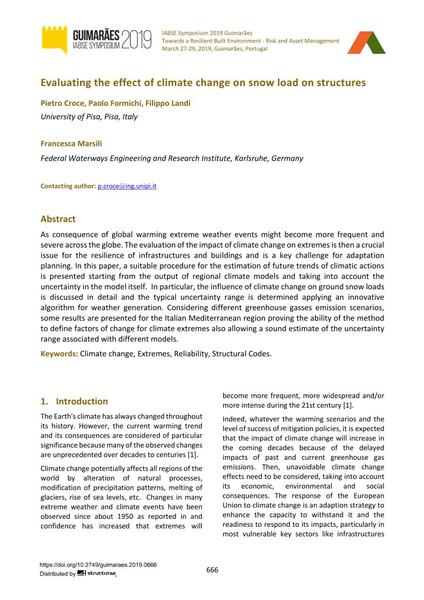Evaluating the effect of climate change on snow load on structures

|
|
|||||||||||
Détails bibliographiques
| Auteur(s): |
Pietro Croce
Paolo Formichi (University of Pisa, Pisa, Italy) Filippo Landi (University of Pisa, Pisa, Italy) Francesca Marsili (Federal Waterways Engineering and Research Institute, Karlsruhe, Germany) |
||||
|---|---|---|---|---|---|
| Médium: | papier de conférence | ||||
| Langue(s): | anglais | ||||
| Conférence: | IABSE Symposium: Towards a Resilient Built Environment Risk and Asset Management, Guimarães, Portugal, 27-29 March 2019 | ||||
| Publié dans: | IABSE Symposium Guimarães 2019 | ||||
|
|||||
| Page(s): | 666-673 | ||||
| Nombre total de pages (du PDF): | 8 | ||||
| DOI: | 10.2749/guimaraes.2019.0666 | ||||
| Abstrait: |
As consequence of global warming extreme weather events might become more frequent and severe across the globe. The evaluation of the impact of climate change on extremes is then a crucial issue for the resilience of infrastructures and buildings and is a key challenge for adaptation planning. In this paper, a suitable procedure for the estimation of future trends of climatic actions is presented starting from the output of regional climate models and taking into account the uncertainty in the model itself. In particular, the influence of climate change on ground snow loads is discussed in detail and the typical uncertainty range is determined applying an innovative algorithm for weather generation. Considering different greenhouse gasses emission scenarios, some results are presented for the Italian Mediterranean region proving the ability of the method to define factors of change for climate extremes also allowing a sound estimate of the uncertainty range associated with different models. |
||||
